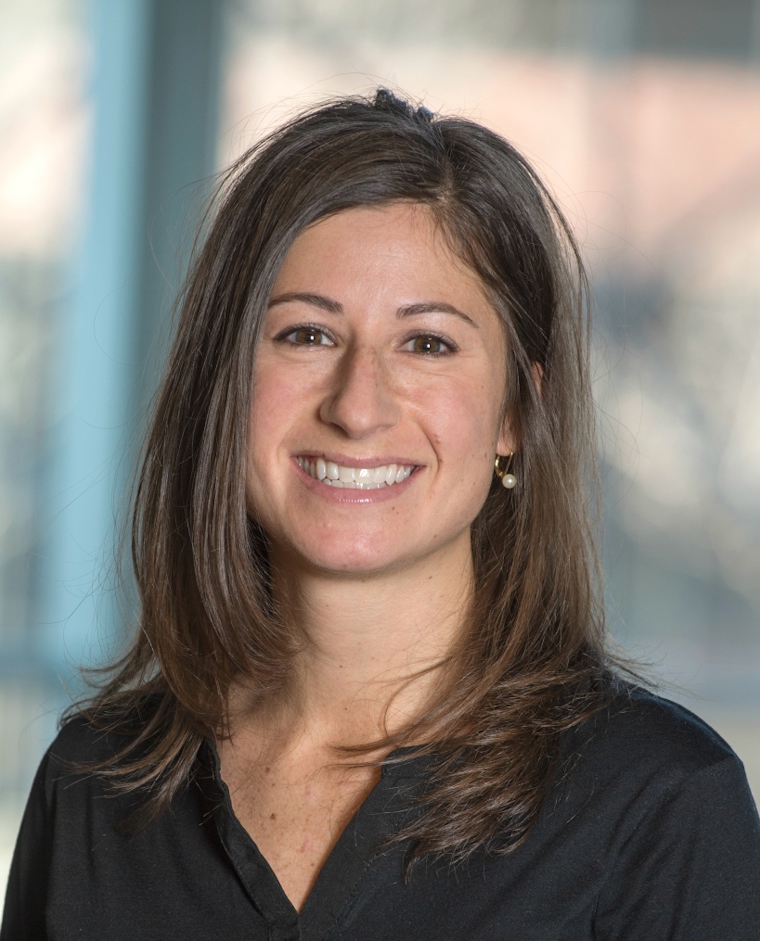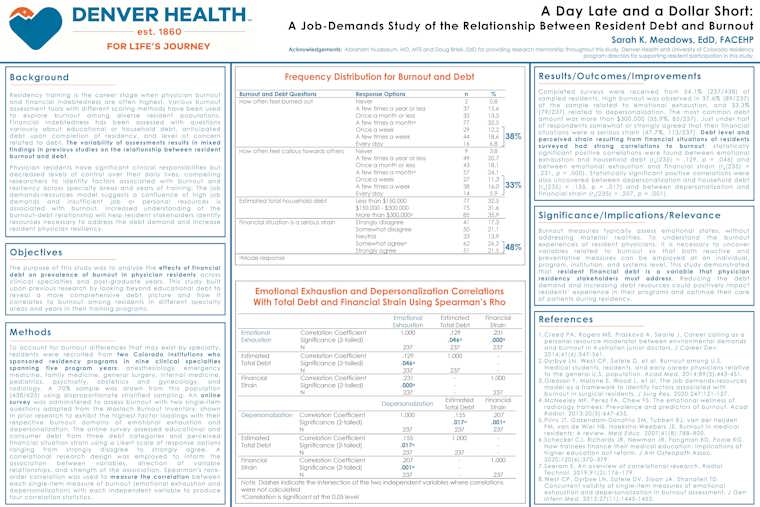Student loan debt has loomed large in the public sphere for the past few years. According to the US Department of Education, 45 million Americans owe a collective $1.6 trillion in federal and private student loans. For physicians, the individual debt load can be staggering. Around 73 percent of physicians graduate medical school with debt, and the median debt owed is $200,000, according to a AAMC report. Sarah Meadows, EdD, FACEHP and Abraham Nussbaum, MD, MTS studied the effects of financial debt on resident burnout, and presented their work in the Poster Hall at the 2022 ACGME Annual Educational Conference, which was held virtually March 30-April 1, 2022.
Poster: A Day Late and a Dollar Short: A Job-Demands Study of the Relationship Between Resident Debt and Burnout
Primary Author: Sarah Meadows, EdD, FACEHP
Co-Author: Abraham Nussbaum, MD, MTS
ACGME: Tell us about your academic and professional role.
Dr. Meadows: I am the director of clinical education in the Office of Education at Denver Health, which is an academic safety-net hospital serving the city and county of Denver. I work with clinical leadership across the institution who welcome learners in physician and non-physician specialties. This includes many physician residents, fellows, and students, but also learners in dentistry, pharmacy, psychology, podiatry, and other fields.
ACGME: Can you briefly describe your project for us?
Meadows: In this study, I analyzed the effects of financial debt on prevalence of burnout in physician residents across nine clinical specialties and five post-graduate years in two Colorado institutions. This study built upon previous research by looking beyond educational debt to reveal a more comprehensive debt picture and how it correlates to burnout among residents in different specialty areas and years in their education programs. Four-hundred thirty-eight (438) residents were recruited to participate in an online survey assessing burnout, debt level, and perceived financial situation strain. A correlational research design was employed to inform the association between variables, direction of variable relationships, and strength of the association.
ACGME: What inspired you to do this project?
Meadows: Each year when I welcome residents to the organization, I am flooded with questions about financial wellness. It made me wonder how that sits with burnout, which we all know has unfortunately shown up more and more among our resident learner population.
ACGME: What did you discover?
Meadows: The burnout frequency across specialty areas was pretty consistent with recent literature, with high burnout presenting in 33 percent and 38 percent of the physician resident sample, in depersonalization and emotional exhaustion (respectively). More than a third of residents had a total debt (excluding mortgage) exceeding $300,000, and financial strain was perceived by nearly half of the sample. The correlation calculations demonstrated statistically significant positive correlations in all four relationships measured: emotional exhaustion and household debt, depersonalization and household debt, emotional exhaustion and financial strain, and depersonalization and financial strain.
ACGME: What was the main takeaway?
Meadows: Burnout measures typically assess emotional states, without addressing material realities. To understand the burnout experiences of resident physicians, it is necessary to uncover variables related to burnout so that both reactive and preventive measures can be employed at an individual, program, institution, and systems level. This study demonstrated that resident financial debt is a variable that physician residency stakeholders must address.
ACGME: Who could benefit from this?
Meadows: Reducing the debt demand and increasing debt resources could positively impact residents’ experience in their programs and optimize their care of patients during residency. Beneficiaries of this research include both residents and residency program leadership.
ACGME: Any additional follow-up plans?
Meadows: I would like to take a qualitative approach to understanding the resident debt experience, which like many variables, is complex. Additionally, study results indicated financial strain was highly correlated with burnout, thus an expanded tool for measuring stress or strain would inform further studies of preventive measures such as resident financial education.




